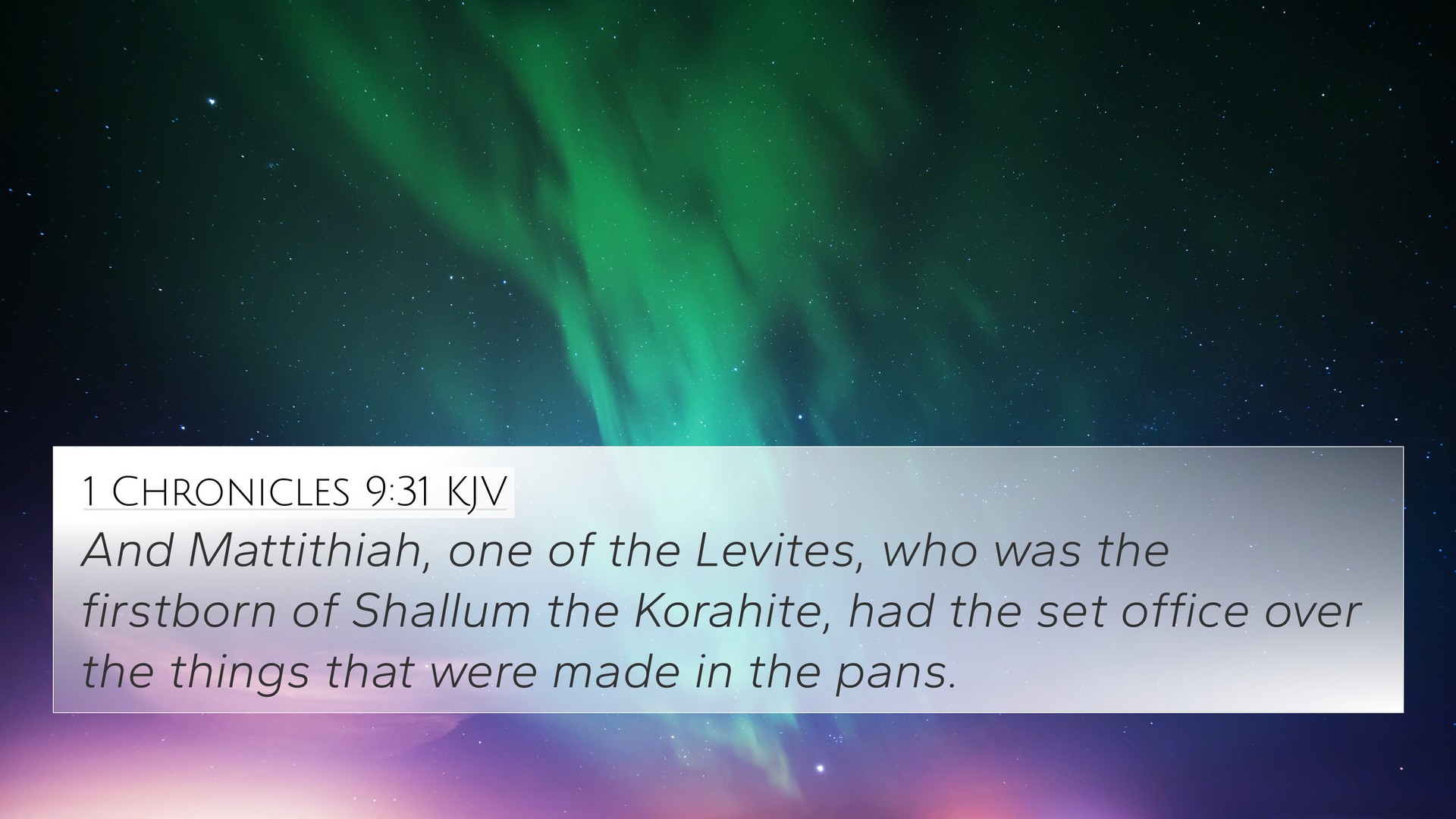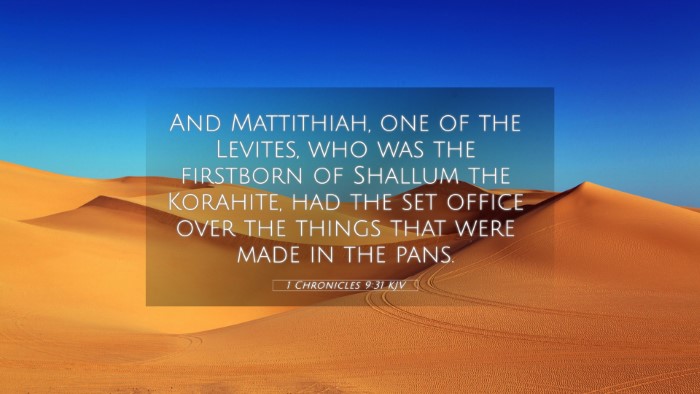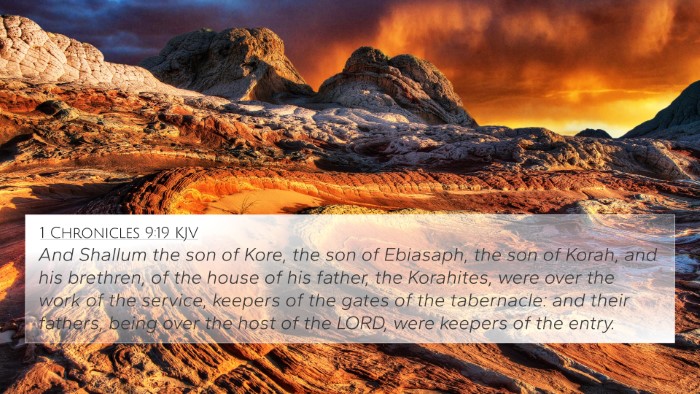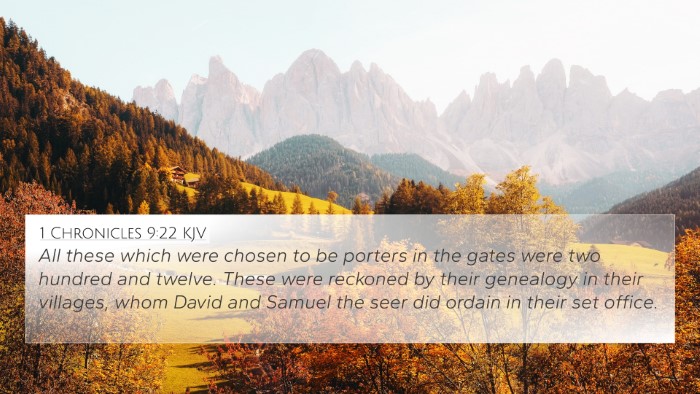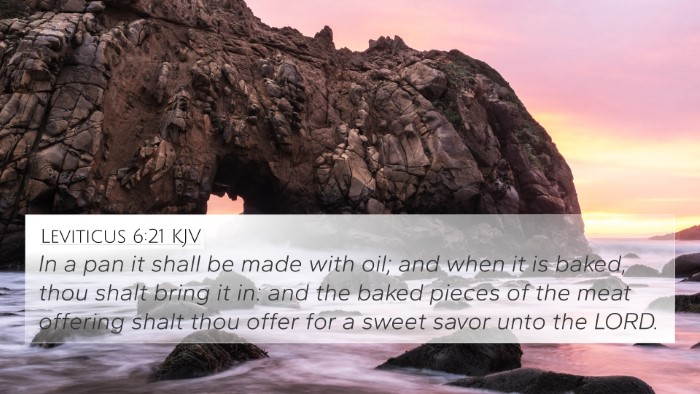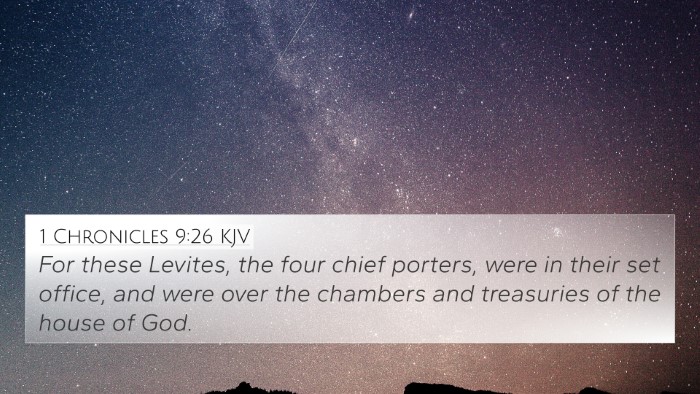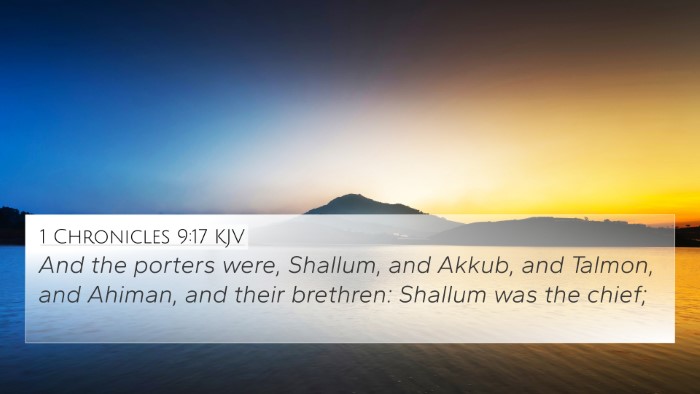Understanding 1 Chronicles 9:31
1 Chronicles 9:31 states: “And Mattaniah the son of Micah, the son of Zabdi, the son of Asaph, was the principal to begin the thanksgiving in prayer; and the thanksgiving was in the hand of Asaph.” This verse offers insights into the role of worship leaders in the Israelite community, especially highlighting Mattaniah’s position associated with the Asaphites.
Significance of the Verse
This passage underscores the importance of organized worship and the leadership within it. Mattaniah is described as a key figure who begins the thanksgiving in prayer, illustrating the significance of prayer and thanksgiving in worship. The cross-references and commentaries shed further light on the themes of worship and leadership found within the broader context of the Bible.
Insights from Public Domain Commentaries
- Matthew Henry's Commentary:
Matthew Henry emphasizes Mattaniah's role in instigating thanksgiving and prayer, showcasing the necessity of having dedicated leaders in the house of God. He asserts that gratitude in worship is crucial as it aligns the hearts of the congregation towards God.
- Albert Barnes' Notes:
Barnes points out that this verse illustrates the lineage of worship leaders, linking them back to Asaph, a prominent figure in music and worship. He highlights the continuity of worship traditions passed down through generations, indicating their significance in maintaining spiritual heritage.
- Adam Clarke's Commentary:
Clarke provides insight into the historical background of the Asaphites, noting their duty in leading worship and making music in the Temple. He discusses how Mattaniah's position reflects a commitment to God through structured worship and organized leadership.
Cross-References to 1 Chronicles 9:31
This verse is interconnected with several other Biblical passages which strengthen its themes:
- 1 Chronicles 16:4-6: Discusses David appointing Levites to minister before the Ark of the Covenant, paralleling themes of worship leadership.
- Psalm 77:1: Reflects the theme of thanksgiving in prayer, resonating with Mattaniah's role.
- 2 Chronicles 5:12-14: Details the temple worship involving Levites, connecting to the roles established in 1 Chronicles.
- 1 Chronicles 25:1-3: Describes the division of the Levites for music in worship, highlighting the importance of organized worship practices.
- Psalm 50:14: Encourages thankfulness and offerings to God, linking to Mattaniah's function in leading thanksgiving.
- Nehemiah 12:46: Refers to the role of singers and musicians in worship during the dedication of the walls, reaffirming the theme of dedicated worship leaders.
- 1 Samuel 10:5: Relates to prophetic worship, understanding Mattaniah's context within spiritual leadership.
Thematic Connections
The key themes emerging from 1 Chronicles 9:31 revolve around:
- Worship and Thanksgiving: The emphasis on beginning prayers of thanksgiving establishes the foundation for communal worship and acknowledges God's providence.
- Leadership in Worship: The significance of appointing individuals like Mattaniah highlights the structured approach to spiritual leadership within the Israelite community.
- Lineage and Tradition: The reference to Asaph demonstrates the importance of ancestral roles and the spiritual legacy carried through generations.
Tools for Bible Cross-Referencing
For those studying 1 Chronicles 9:31, utilizing tools for Bible cross-referencing can enhance understanding:
- Bible Concordance: A concordance helps locate words and themes, connecting various scriptures relevant to worship and prayer.
- Bible Cross-Reference Guide: These guides highlight themes and passages that interact with each other, enriching the study experience.
- Cross-Reference Bible Study: Engaging in cross-referencing methods promotes deeper scriptural engagement and understanding.
- How to Use Bible Cross-References: Mastering cross-reference methods can provide insight into scripture interconnections, adapting them for personal study.
Conclusion
In 1 Chronicles 9:31, we see the importance of designated roles in worship and the act of thanksgiving in prayer. Through detailed commentary analysis and cross-references, we find profound connections that deepen our understanding of Biblical themes surrounding worship, leadership, and the continuity of spiritual practices.
